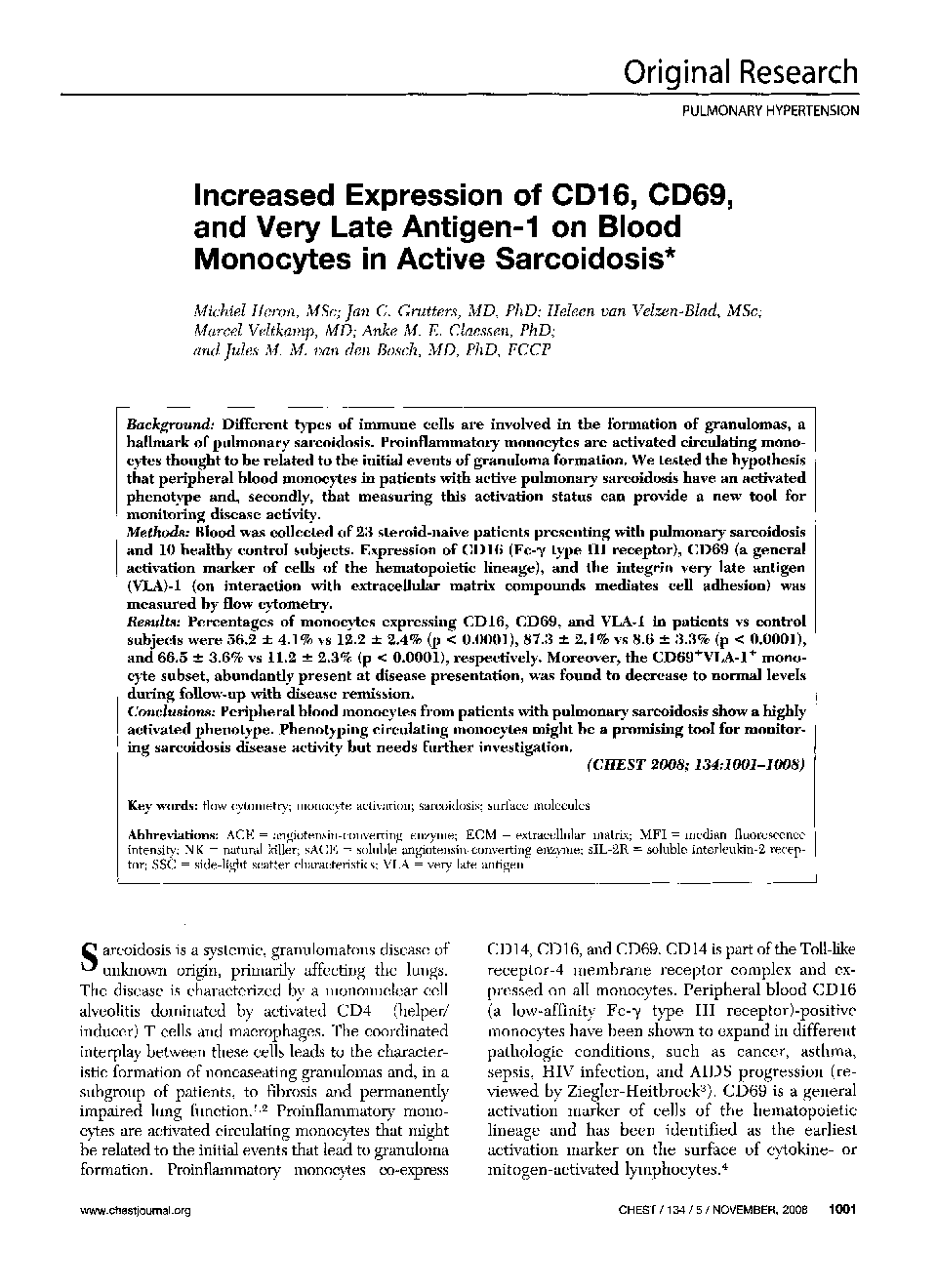| Article ID | Journal | Published Year | Pages | File Type |
|---|---|---|---|---|
| 2902806 | Chest | 2008 | 8 Pages |
BackgroundDifferent types of immune cells are involved in the formation of granulomas, a hallmark of pulmonary sarcoidosis. Proinflammatory monocytes are activated circulating monocytes thought to be related to the initial events of granuloma formation. We tested the hypothesis that peripheral blood monocytes in patients with active pulmonary sarcoidosis have an activated phenotype and, secondly, that measuring this activation status can provide a new tool for monitoring disease activity.MethodsBlood was collected of 23 steroid-naive patients presenting with pulmonary sarcoidosis and 10 healthy control subjects. Expression of CD16 (Fc-γ type III receptor), CD69 (a general activation marker of cells of the hematopoietic lineage), and the integrin very late antigen (VLA)-1 (on interaction with extracellular matrix compounds mediates cell adhesion) was measured by flow cytometry.ResultsPercentages of monocytes expressing CD16, CD69, and VLA-1 in patients vs control subjects were 56.2 ± 4.1% vs 12.2 ± 2.4% (p < 0.0001), 87.3 ± 2.1% vs 8.6 ± 3.3% (p < 0.0001), and 66.5 ± 3.6% vs 11.2 ± 2.3% (p < 0.0001), respectively. Moreover, the CD69+VLA-1+ monocyte subset, abundantly present at disease presentation, was found to decrease to normal levels during follow-up with disease remission.ConclusionsPeripheral blood monocytes from patients with pulmonary sarcoidosis show a highly activated phenotype. Phenotyping circulating monocytes might be a promising tool for monitoring sarcoidosis disease activity but needs further investigation.
